Formerly Seattle Smile Designs & Bellevue Center for Orthodontics
Refer a PatientRight Time for Braces?
---It is never too late to begin orthodontic treatment – but when it comes to your child’s jaw and teeth development, earlier may be better than later.
According to the American Association of Orthodontists, all children should have an initial orthodontic screening at age 7. If you suspect a growth issue including snoring, mouth breathing, grinding, a crossbite, an underbite or an overbite, please bring your child in sooner. We may not initiate treatment yet, but the initial evaluation is still important.
Things to be concerned about in growing children:
- Underbite
- Overbite
- Crossbite
- Openbite
- Mouth breathing
- Snoring
- Crowding
- “Tongue-tie”
- Digit sucking
We understand that you and your family juggle busy schedules with afterschool activities, homework, and other obligations. We will do all we can to accommodate your schedules. We offer both braces and Invisalign for our teenage and adult patients. During your consultation appointment, we can discuss the pros and cons of both treatment options.
Common
Orthodontic
Problems
When a person’s teeth or jaws do not fit together properly, orthodontic treatment may be necessary to correct the problem.
If left untreated, these orthodontic problems, often referred to as malocclusions, can cause speech difficulty, premature wear of the teeth and protective enamel, and even increase the chance of injury to the teeth and jaw joints.
Underbite
An underbite is characterized by an underdeveloped maxilla, causing the upper teeth to rest behind the lower front teeth. This problem is best treated as early as possible.
Crossbite
This malocclusion occurs when the upper teeth sit inside the lower teeth, which may cause tooth stratification and misaligned jaw growth. In order to close the mouth, patients usually move their lower jaw forward or to the side when closing. This incorrect bite results in an improper use of the lower jaws and sometimes brings about facial asymmetry.
Upper Front Teeth Protrusion
The appearance and function of your teeth are impacted by this type of bite. It is characterized by the upper teeth extending too far forward or the lower teeth not extending far enough forward.
Overbite
An overbite indicates that the lower jaw is not growing properly. This can be the result of a lower lip entrapment, a digit sucking habit, a deep bite, and/or a tongue tie. When the upper front teeth extend too far forward, they are at risk of injury. If the underbite is the result of a habit we can address early, we want to intervene and get growth on the right track.
Crowding
Crowding can be an early sign that there is insufficient bone growth to accommodate the eruption of the adult teeth. The best thing we can do for these growing children is expansion. Today, we can help develop more bone, alleviating the crowding and helping to avoid extractions and gum recession later in life.
Spacing
Spacing is a terrific and normal finding in the primary dentition. In the adult dentition, spacing may be a sign that there is an anterior tongue placement habit. It can also be secondary to congenitally small teeth. We will look at the root cause of spacing when we determine your best treatment options.
Openbite
Openbites are signs that there is not enough room for the tongue and/or that there is a tongue tie. Openbites are sometimes the first sign that there is an airway issue with a growing child. Correction of an openbite includes understanding why it happened in the first place and treating the underlying cause as a part of comprehensive treatment. If you see an openbite pattern developing, please see us for an evaluation.
Dental Midlines not Matched
Dental midlines that do not match are evident when the back bite does not fit and match appropriately. This may negatively impact jaw function and proper dental function.
We specialize in Invisalign.
We offer a wide range of treatment options utilizing clear aligners including simple cases, interdisciplinary cases and even jaw surgery cases.
Learn MoreNon – Surgical Skeletal Expansion with TAD-Borne Expanders
Today, we can offer non-surgical and minimally invasive surgical options to widen upper jaws. This is an incredible option to improve airway and make room for the tongue, to open nasal cavity spaces, to correct crossbites, and to possibly avoid taking out teeth in very crowded situations.
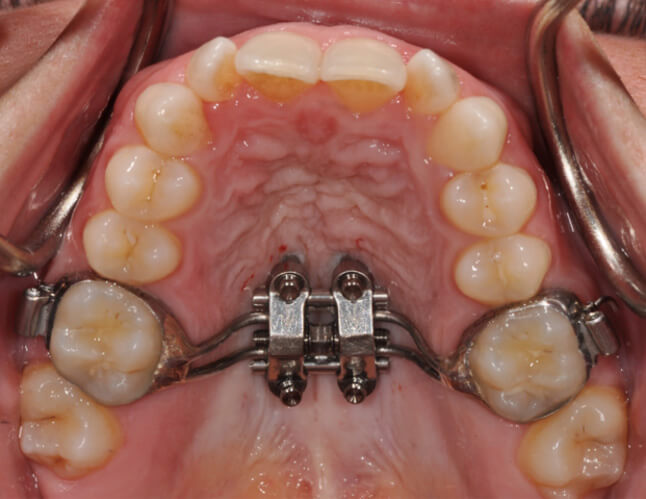
The Maxillary Skeletal Expander is placed using only local anesthetic and can provide changes in as soon as two weeks.
Case Example: Adult Female
See the stunning results for our patient in the before and after photos below:

3D X-Rays
We incorporate low radiation 3D X-Rays in our practice when indicated. Our 3D radiographs allow us to visualize the following:
- Airway dimensions and possible blockage including tonsils and adenoids
- Impacted teeth
- TMJs
- Skeletal relationships
- The position of the teeth within the bone
Before & After Adult Expansion
As viewed with our 3D XRay technology:
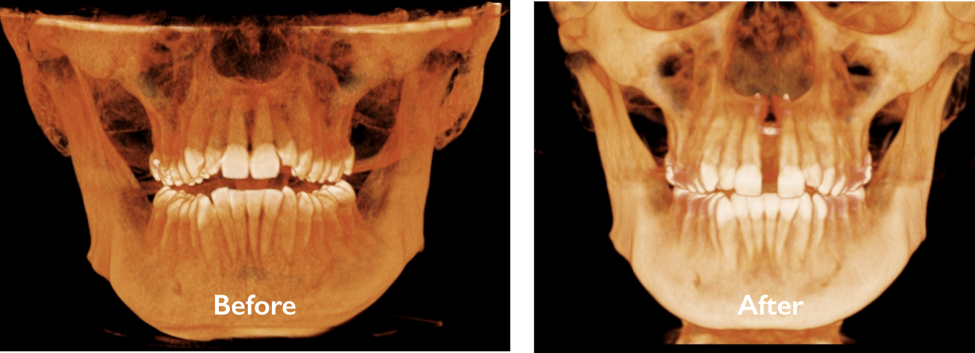
Adenoids (outlined in pink) in a snoring child
The x-ray illustrates that the adenoids are blocking the airway:
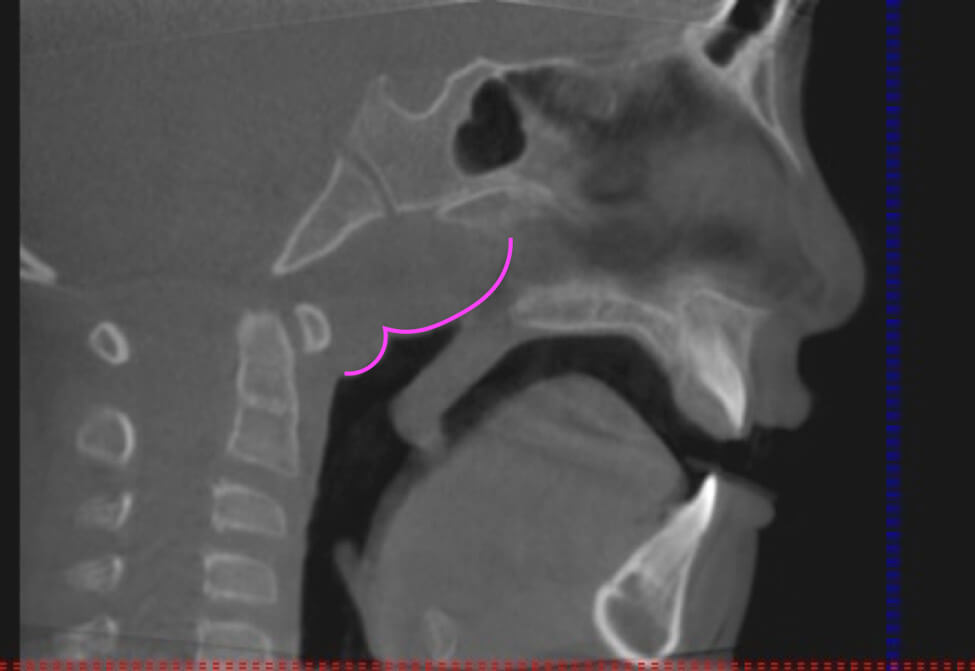
Our goal is a beautiful smile at two locations
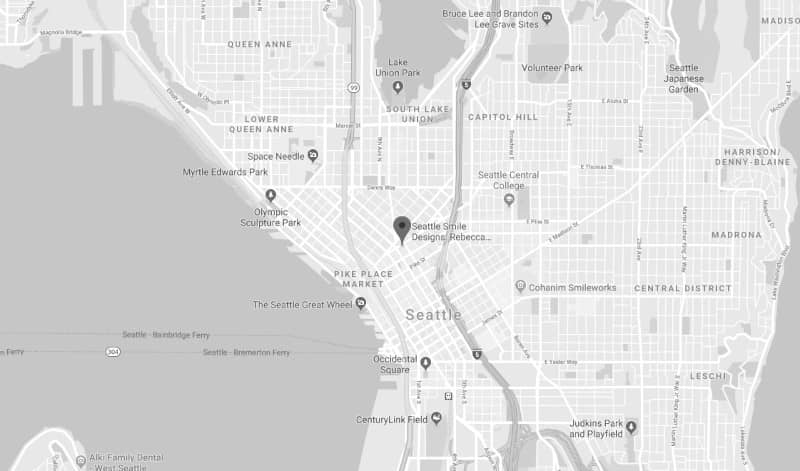
Seattle Orthodontics
---509 Olive Way Suite 840
Seattle, WA 98101
Text or Call: (206) 623-2192 | Email
Office Hours
Mon - Wed, 8:00 AM - 4:30 PM
Thu, 9:00 AM - 12:00 PM
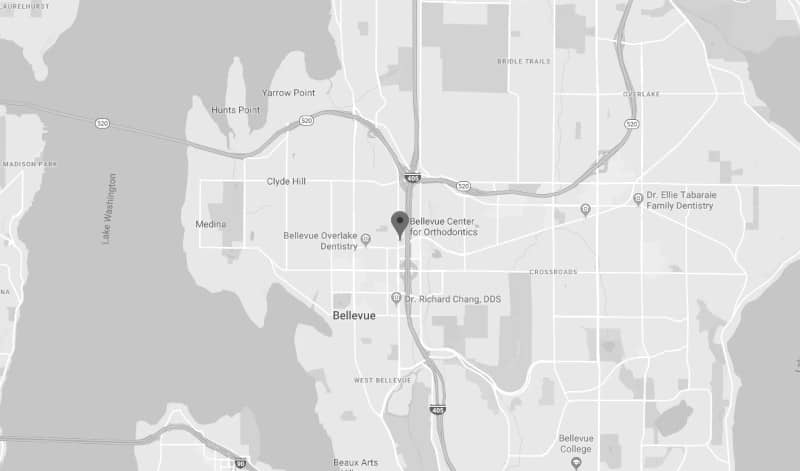
Bellevue Orthodontics
---1200 112th Ave NE B-200
Bellevue, WA 98004
Text or Call: (425) 453-0551 | Email
Office Hours
Mon - Thurs, 8:00 AM - 4:30 PM
Fri, 9:00 AM - 4:30 PM